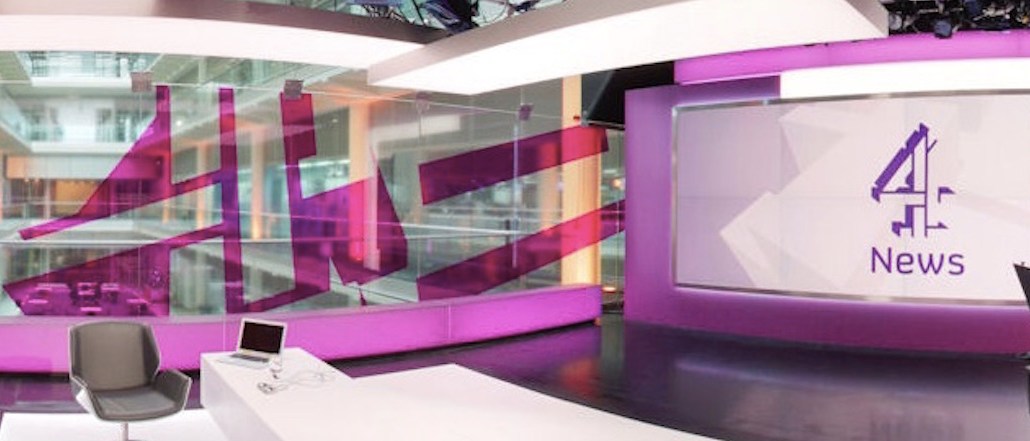
In the last year, U.K. broadcaster Channel 4 News has entirely stopped posting text and static photos to social media to focus almost exclusively on video. The move to video has paid off: Although half its Facebook posts were already video as of January last year, it netted a total of 5 million views for the month. Today that monthly number is over 200 million.
That’s more than the BBC News’ main Facebook page which had 165 million views in June, while Sky News had 126 million video views on Facebook and ITV News 62 million views, according to Tubular Labs data.
And that Facebook audience is young: about two-thirds under the age of 35. Nearly all (95 percent) of its Facebook posts are now video, and a quarter of them edited in “square” (rather than vertical) format to suit mobile and desktop platforms and look good in Facebook’s news feed. All feature subtitles since most people watching within Facebook’s news feed are doing so with the sound off.
So far, Channel 4 has been using a mix of repurposed TV assets and new original content just for Facebook to drive growth. It’s easier for a broadcaster to adapt to social video creation and distribution than a publisher whose legacy is text-based articles. And a broadcaster like Channel 4 News has a wealth of video assets it can repurpose for social platforms like Facebook. But there are still big changes needed internally to make it work, and new tools like Facebook Live call for new editorial techniques.
Strong branding is critical when publishing directly to platforms like Facebook, either using tools like Live or Instant Articles. Broadcasters like Channel 4 want audiences to know who is bringing them the information, wherever they’re consuming it. That means all original content must reflect the Channel 4’s public service remit and wider brand identity, which is edgier than the mainstream broadcasters like the BBC and ITV, and known for taking creative risks. This video — showing radical Islamist preachers taking their message to the streets of London only to get repeatedly shut down by ordinary Muslims — sums up well what Channel 4 News is about. It attracted 16 million views.
“Everything we do needs to bring quality and depth to the storytelling. People expect us to challenge authorities and tell the stories no one else is telling,” said Channel 4 News digital editor Jon Laurence. “They care about serious news.” The videos which do this, particularly on topics like race, politics and international affairs, are particularly popular.
A two-minute video published in the news feed yesterday called “Children on the Frontline: Escape from Aleppo” has already been watched 600,000 times. It’s introducing more original video formats specifically for Facebook, like its FactCheck videos.
The EU Referendum was an ideal topic for one of these formats, due at a time when people were searching for explanations on the outcome of the Brexit vote. The FactCheck video, examined the claims made on both the Leave and Remain sides of the Brexit campaign, and received 13 million views. Since then, it’s published many FactCheck original videos on the topic, like “How much is the EU costing you” and “Are EU immigrants taking our jobs?” which have generated 8.2 million views between them.
It’s now capitalizing on the accelerated growth in demand for its original Facebook videos, having just launched two spin-off Facebook pages, called “Channel 4 News Identity“, and ”Channel 4 News Democracy.” Yesterday it live streamed an interview with Nigerian novelist Chimimanda Ngozi Adichie on Facebook on its Identity page.
Unlike newspaper publishers like the New York Times and The Sun, Channel 4 News doesn’t have a team dedicated solely to creating content just for social platforms. It has a 12-person team of digital journalists each of whom is responsible for creating content for the web and social platforms. For now, the focus is predominantly Facebook, YouTube and Twitter.
“We’re not about volume, we’re about quality and impact,” added Laurence. That means for now, the platforms like Snapchat whose signature is their unpolished feel, aren’t a priority.
Currently it publishes around 60 videos to Facebook a week, a couple of which are Live videos. When it comes to what format to shoot video in, it has a simple rule: if it’s a story about a protest, which requires sweeping shots of large distances, it won’t work on Facebook. Instead it prioritizes what will look visually good in the square size suitable for the Facebook news feed, that tends to be interviews, or people talking or narrating. Some new editorial formats are in the works, according to Laurence.
More in Media

What publishers are wishing for this holiday season: End AI scraping and determine AI-powered audience value
Publishers want a fair, structured, regulated AI environment and they also want to define what the next decade of audience metrics looks like.

Media giant Essence launches a marketplace for Black women-led brands
Essence has launched WeLoveUs.shop, a new online marketplace dedicated to Black women-led brands.

In Graphic Detail: The state of AI referral traffic in 2025
The stats reveal a new audience pipeline forming outside of traditional search and social platforms.





